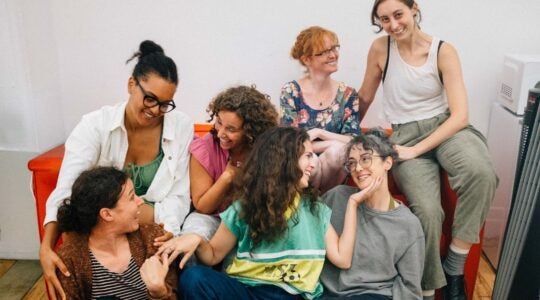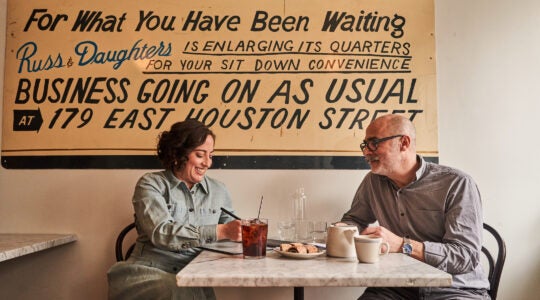Eliana Melmed refuses to be labeled or categorized. Courtesy of Joshua Monesson
Editor’s Note: Eliana Melmed was a finalist for The Norman E. Alexander Award for Excellence in Jewish Student Writing. The national contest sought essays on a Jewish American who has made a significant impact in the field of television, film, music or theater. Writers were asked to identify the person’s lasting legacy on them or on American culture. The contest was sponsored by the Jewish-American Hall of Fame and The Jewish Week Media Group.
The question comes from my teachers, my college counselor, my peers, my grandmother’s friends, the woman sitting next to me at shul: What kind of person are you? Do you like art or science? Math or English? I know that the expected answer fits neatly into a box, but the truth is: I like everything.
So did Eleanor Antin. Filmmaker, professor, screenwriter, actress, photographer and artist, she actively resisted society’s labels. “…as a Jew, I’m an outsider. As a woman, I’m an outsider,” she was quoted in the book “Looking Jewish: Visual Culture & Modern Diaspora” by Carol Zemel. These feelings of exclusion were chiseled into artwork, and Antin created masterpieces that defied societal norms.
I was most moved by Antin’s “Carving: A Traditional Sculpture,” a multi-photograph series published in 1972 that documented the changes that occurred to Antin’s body during a 36-day diet. Using her camera as a paintbrush and her body as a canvas, Antin mocked the idea that a woman is a piece of marble to be carved into someone else’s perfect statue. In the dozens of films she wrote, starred in, directed and produced, Antin created personas that revealed a haunting truth about the ancillary role women had been cast to play not only in 20th-century America, but also in pre-Holocaust Europe.
Today, I feel this same pressure as a woman to be labeled and neatly packaged into the box on the left side of the mechitza (gender partition). In my Modern Orthodox temple, I can’t publicly read from the Torah, lead services or sit next to my dad at my bat mitzvah. But slowly, things are beginning to change in ways that would make Eleanor Antin proud. Women are now encouraged to lead their own halachic services where they can read Torah. My temple is the first Orthodox one in Los Angeles to welcome a female clergy member. And I’ve had the empowering experience of blogging for the Jewish Women’s Archive, an organization that celebrates and documents important women and their ongoing contributions to society.
“I was determined to present women without pathos or helplessness,” Antin said in a Feminist Artist Statement. The changes that are occurring show that we women do not need to be pitied or sentimentalized; we are not clay to be molded and shaped by overprotective hands. What had been only a hope in Antin’s youth is now becoming a reality, and for that we can thank Eleanor Antin’s persistence, her originality, her confidence and her activism.
In my senior year of high school, I have been implored to whittle down my interests. But I refuse to choose just one subject when I am fascinated by so many. Eleanor Antin has taught me that a woman should not carve herself, physically or otherwise, to fit a mold created by somebody else.
The next time I am asked to put myself in a box, I will think of Eleanor Antin, and rip the label to shreds.
The New York Jewish Week brings you the stories behind the headlines, keeping you connected to Jewish life in New York. Help sustain the reporting you trust by donating today.




